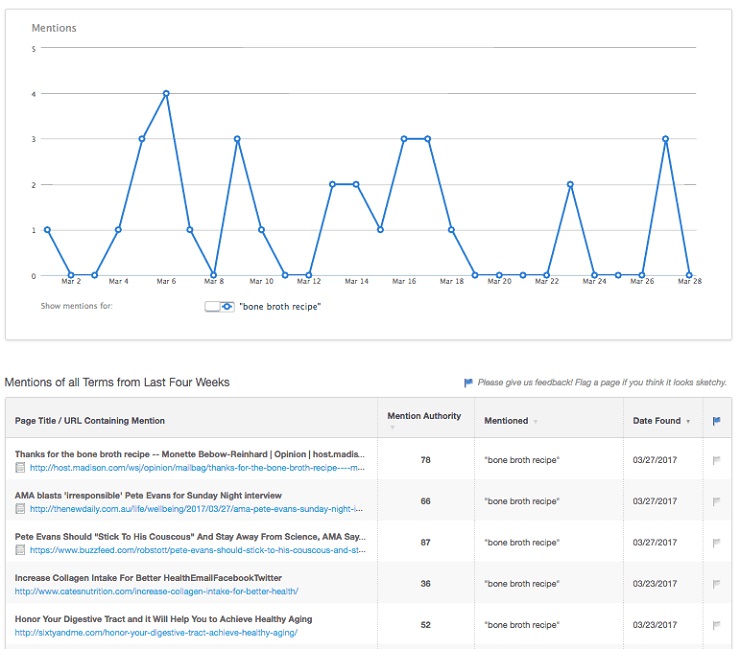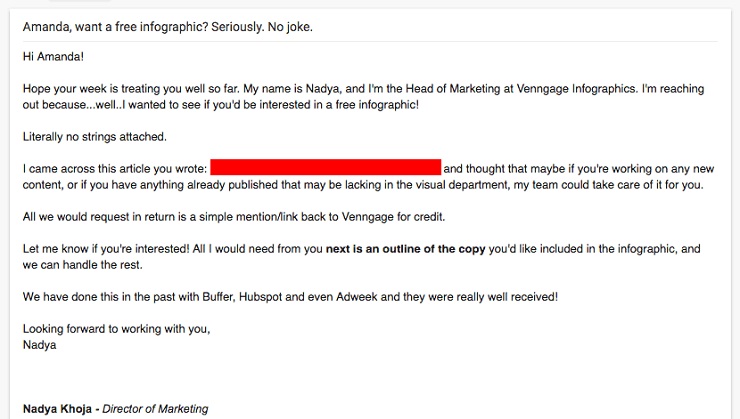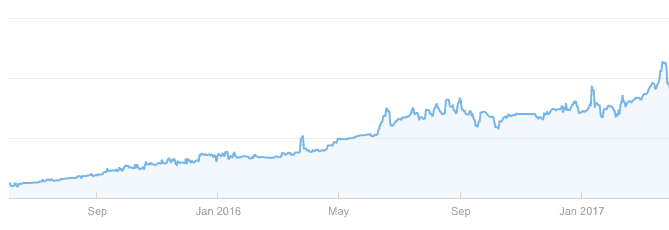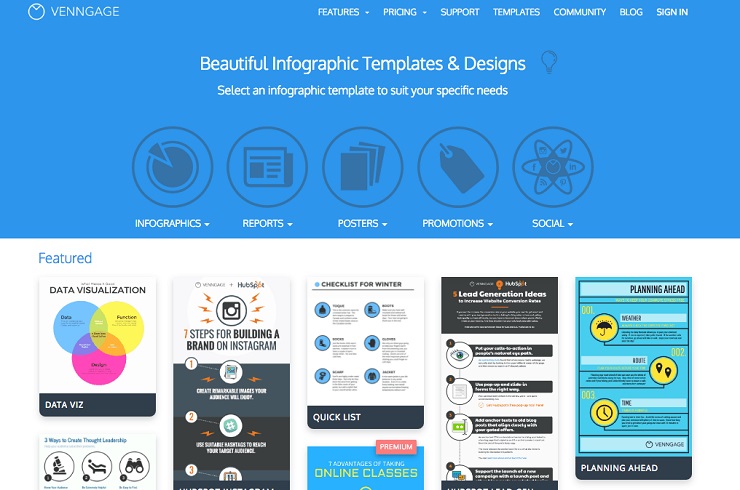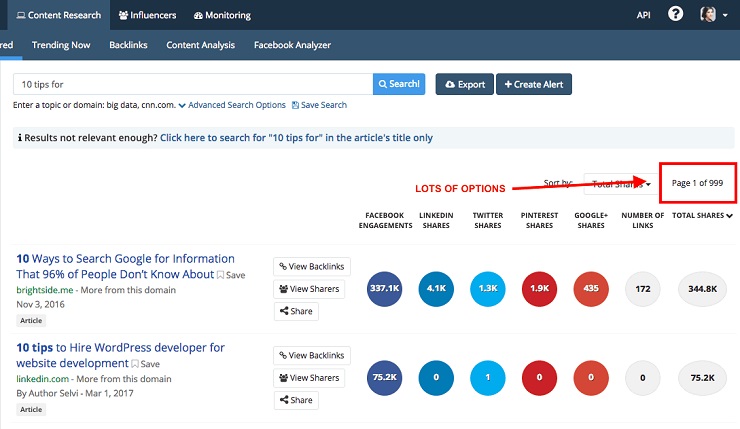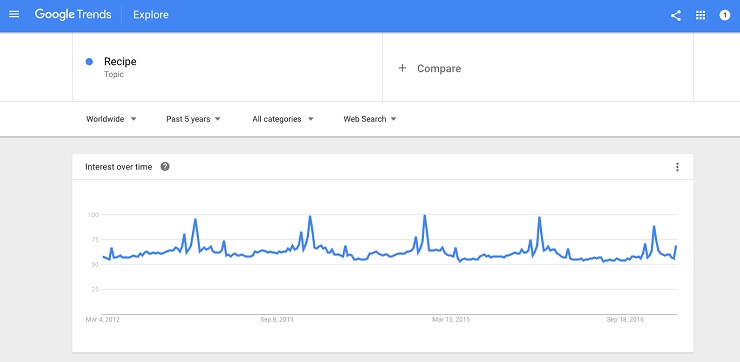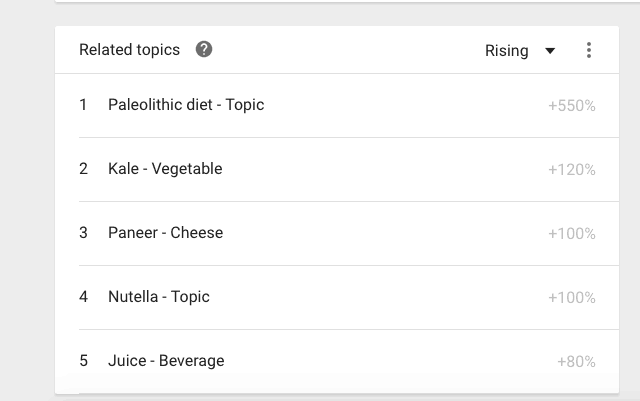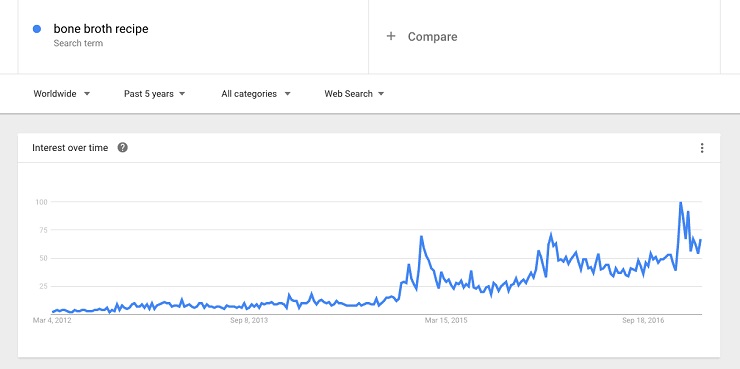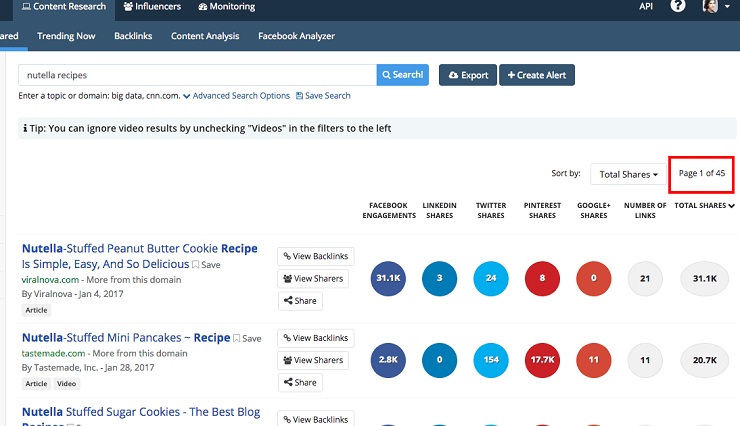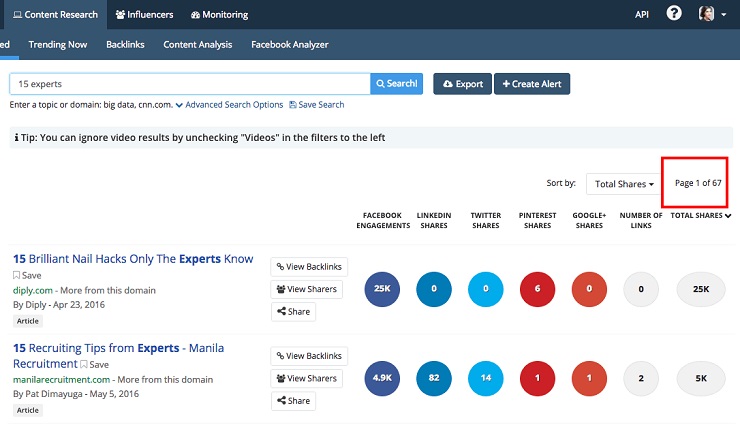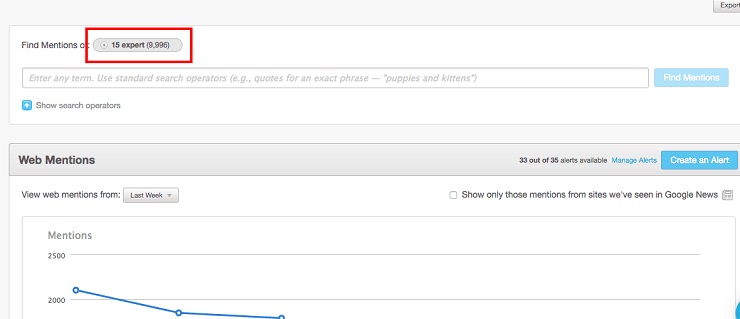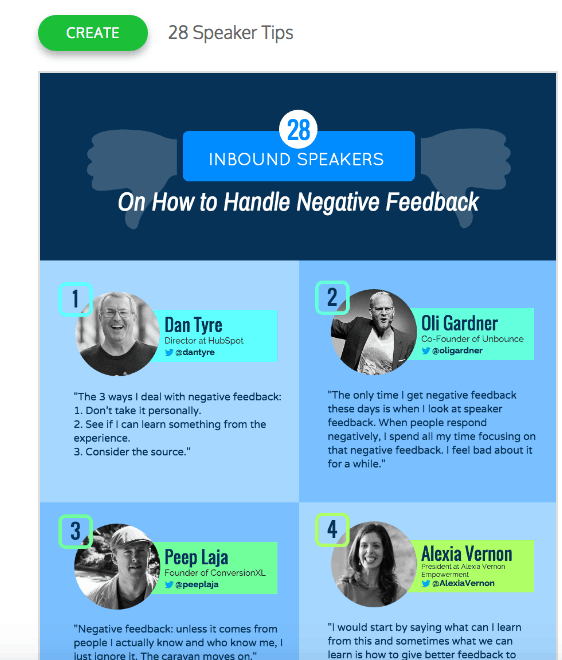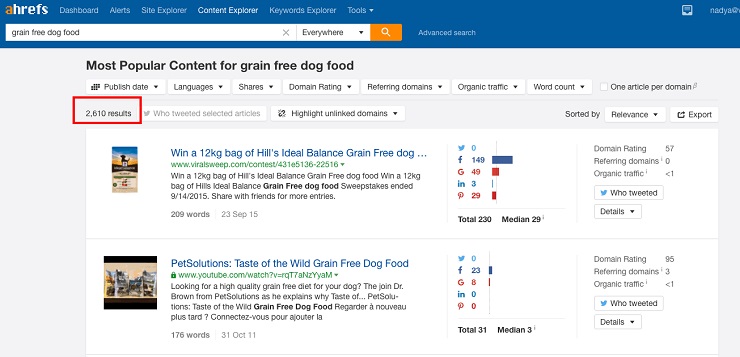A lot of people I talk to are hesitant to tackle SEO as a growth channel, which is completely understandable. It can take a really long time to see results, and because there is so much competition (aka the entire web), the process for building up your website’s domain authority can seem highly daunting.
You’re also constantly having to think about which keywords you want to rank for, how to create content that targets those keywords, and then how to approach building links to that content.
Chances are, you’d much rather work on your products and write some content for your website about whatever topics you find interesting.
Although it seems hard, if you’re not optimizing your site for search, you’re missing out on a massive traffic opportunity. And even though it’s slow, there is so much longevity to ranking high for any keyword in Google searches.
Sure there is a lot of work now, but the payoff is great.
The curveball is that a lot of people are using similar SEO tactics right now—especially backlinks, or getting other reputable sites to link back to your site to improve your ranking in search results. That means it’s become increasingly difficult to make a significant impression.
In my own marketing work at Venngage, I frequently email out pitches or request for backlinks, and when I hit that “send” button, I often find that I need to brace myself.
And by that, I mean prepare myself for the possibility of a storm of angry rejection emails.
Cold outreach is tricky. On one hand, it’s annoying as hell to receive unsolicited emails and it’s not always fun to be the sender either. On the other hand, it works.
The SEO results from this method of link building have been great for a while now, but needless to say, there is always that one person who is having a horrible day and tells you to:
I usually don’t mind it, honestly.
I’ve got a tough exterior and am pretty good at brushing negativity off my shoulder. But lately, I’ve been getting so frustrated by these angry emails that I can’t help but search for another way.
If you have attempted to make SEO a channel for your business’s marketing, then you’ve probably experienced something similar. You know it works, but you dread doing the outreach itself. I’ll share with you here the solution I came up with.
The Pros and Cons of Cold Emailing
Like most things in life, there are pros and cons to cold emailing.
The Pros:
- It’s a fast way to build links.
- It’s easy to present yourself and your brand to new prospects.
The Cons:
- People end up hating you.
- People end up hating your brand.
Looking at this list, you probably can’t help but notice that the Cons outweigh the Pros.
There is Another Way
Many sources will tell you that cold outreach is a terrible idea and you should never do it. Instead, they say, focus on building “valuable” relationships with influencers.
But how are you supposed to build that relationship without inserting yourself into another person’s life? That’s seems about as intrusive as cold pitching, and frankly, a lot more time-consuming.
The conclusion I’ve come to is that it’s important to understand where the limit is with cold pitching, and sticking to safe territory. Do that, and your outreach will become a lot easier, and a lot more hate-free.
You can identify that limit by asking yourself a few simple questions:
1. Is your email clearly a sales pitch for your product?
2. Are you clearly asking for a favor without offering anything in return?
3. Is it obvious that you have not done any research about the person you are contacting?
If your answer is yes to the above questions, you’re doing your outreach wrong, and you’ve wandered outside the limit of advisable cold pitching.
I’m not going to lie, it is very tempting to send out a massive email blast to a few hundred people and just ask them for a link. And yes, sometimes it is pretty effective! Some people are givers, after all, and really don’t mind helping out a person in need.
But the truth is, a lot of people are busy, and most people don’t care about helping you, unless there is something in it for them. That means, even if you get some “yeses,” you’re potentially going to irritate a much larger number.
So what do you do? You play to their needs and desires. You begin by offering them something first!
Offering Before Asking
Let me give you an example of what I mean.
When Venngage was just a little baby of an infographic maker, our traffic numbers were nowhere near impressive. We were a small team of just four people, and sure, we had visitors signing up for our tool, but we had hit a plateau in terms of growth.
So we decided to focus on drawing organic web traffic by targeting high volume keywords — meaning terms that a lot of people enter into Google, and specifically ones that we knew would convert.
The idea being, if people were searching for the term “infographic maker,” by targeting that term and having our site’s content show up high in the results’ page, there would be a good chance they’d click on us and find what they were looking for—poof, customer.
Cold outreach was one of our strategies to improve our ranking, because as a baby company, it’s not easy to get natural backlinks just by writing good content. It would be nice if quality content naturally rose to the top, but that’s just not always the case.
You know why?
Because if no one is reading your content, since they don’t know your blog even exists, chances are no one will link to it either. And even with outreach, the chances of the person on the receiving end actually linking to the anchor text of choice (anchor text is the piece of content that you want to climb the Google results ladder) is slim.
But what if I told you that we found a way to rank for any keyword with extremely high success rates?
Here’s what we did:
First, we started researching top-ranking content for a variety of keywords.
We used Moz’s Fresh Web Explorer to find popular content on a range of trending topics. In the below screenshot, we searched for “bone broth recipe.”
Then we filtered out the sites with lower domain ratings, or sites that Google’s search algorithms don’t value as much, and exported the list. After that, we started reaching out to the authors of the content on that list.
And this is when we asked them the magic question:
“Would you be interested in a free, custom infographic?”
Sounds like a pretty sweet deal, right?
Most design agencies will charge anywhere between $1,000 and $10,000 just for ONE infographic. We were doing it for free!
And on top of that, all we requested in exchange was a link back to the anchor text of our choice.
Now, I know what you’re wondering. Infographics take time and money to create. How could we possibly benefit from this process in the long run?
Why it Works
Venngage is an easy-to-use graphic design software, so it only takes us a couple of hours to create a good-looking infographic, if it’s being custom made.
If we’re using an existing template, it takes less time, sometimes less than an hour!
But between you and me, despite having a very compelling offer, we didn’t even actually do the bulk of the work. You see, we got those who were receiving the infographic to do the hard stuff.
Let’s take a closer look:
The individual on the receiving end of the email was required to put together the outline of the copy, send over any color schemes and logos, basically give us everything we required, and we just had to pretty it up. All we needed to do was select a template, edit the text and icons, and make an infographic using our platform.
After a few days, we’d send over a draft for approval and that was that.
Next thing you know, the infographic is published on their site with a nice shiny link pointing back to our site.
Using this process, we managed to grow our organic traffic by almost 800% in less than two years, and rank for a variety of high volume keywords specific to our business.
See for yourself:
The next question on your mind is probably how you can do this too, right? After all, this is great if you happen to have an infographic company, but you probably don’t. Fear not, this approach can work for pretty much anyone.
Producing a Compelling Offer
Start by figuring out what you can offer.
What is something your team does really well that you might use as a compelling offer to establish a relationship? Maybe it’s infographics, but maybe you’re also great at making videos, SlideShare presentations, or maybe you have an eye for photography.
For instance, let’s assume you have a marketing automation tool. As a SaaS company that is unrelated to infographics, how can you tie infographics into your offer?
Well here’s the thing, at the end of the day an infographic is just another piece of content that presents information in a more digestible format. You just need to identify who your target audience is, and where they are consuming their information. This is who you target, and this is who you offer your custom infographic to. But more detail on this later.
To produce a compelling offer, start by showing your prospects how you can provide value to them. And please don’t offer them a “mini guest post” to go along with an existing infographic you made two years ago. No one wants that.
But let’s say you do decide to offer a free custom infographic as your offer. I’ll let you in on a little secret: You can use this method even if you aren’t actually a good designer (or the owner of an infographic company).
Why don’t we walk through a couple steps.
Step 1: Use a tool
The first step is signing up for a tool (unless you are already really great with Photoshop or Illustrator).
A web-based infographic maker will cost you anywhere between $15 to $50 a month. If you make one infographic a week, you’re spending $12.50 at the most per infographic, if you’re creating them yourself.
Once you’ve found the right tool, don’t waste your time trying to create a great design from scratch. Instead, take advantage of the hundreds of professionally designed templates at your disposal and fill in the blanks. Here’s some of ours (I know, I’m biased):
Step 2: Find a freelancer
If you are completely opposed to designing anything yourself, consider looking to Upwork to hire a freelancer.
You can find some remote designers who will be able to complete the work for as low as $5 an hour. Combine that with an easy-to-use tool that only takes them a couple hours to work with and you’re spending less than $30 per graphic.
Once you’ve decided how to approach creating your offer, you can focus on finding potential prospects and building relationships.
How to Find Contacts to Post Your Infographic
The truth is, people like free stuff. If you’re willing to give them something that they want, for free, you have a better chance at getting what you want without much struggle.
When finding contacts who are most likely to say yes to an infographic (or other offer), and who are willing to include a link to the anchor text of your choice, try looking for these things:
1. List-Based Articles
Not only are list-based articles easy to transform into visual format quickly, but there are a lot of them. Seriously, every other article seems like a list these days.
Why are they published so frequently? Because they work well. The reader is told exactly what they’re getting in the article, they’re easy to skim quickly, and they present information in a digestible way.
Start by going to Buzzsumo’s Content Research tool and typing in the following formula:
“# Ways to…”
You’ll get plenty of opportunities for collaboration, and once you have a designated “10 Things” template prepared, you can repurpose the same basic approach for each infographic you create.
Brilliant, I know.
2. Recipes
Another option is to search for recipes.
According to Sprout Social, the words “DIY,” “Cup,” and “Recipe” resonate the most with people on Pinterest.
Being a top source for visuals and infographics, chances are if a certain query is driving the most engagement on Pinterest, there is a lot of demand for that image type.
Go to Google trends and search the topic of “Recipe.”
If you scroll down a bit, Google will tell you which search terms and topics are rising in popularity. Use that to help you identify what types of recipes to research.
Now that you have this general knowledge, you can either search for specific recipes that include elements from the above list, or you can search directly for recipes with nutella or kale.
So for instance, if you’re focusing on the topic of paleolithic diets, you can try searching for bone broth recipes, for instance, which you can see below has had a growth in interest.
But you’ll still notice plenty of potential for a more general search query, like “Nutella Recipes” as well.
Similarly, if you do decide to create recipe-based infographics, you can create one template that can be repurposed multiple times.
Here’s an example of one we made for bone broth company, Kettle and Fire:
3. Expert Roundups
Finally, another great option for infographic outreach is to use expert roundups as your starting point. Marketers love creating lists of tips and tricks from influencers, and a lot of blogs are more likely to publish this kind of post if an infographic is accompanying it.
As you can see in the above screenshot, a search term like “15 Experts” is enough to yield 67 pages of results on Buzzsumo, and nearly 10,000 possibilities on Moz.
You can use this formula:
“# Experts…”
No doubt you will have a year’s worth of collaborators at your disposal by simply typing in a different number each time.
Expert roundups are another one of the easiest kinds of infographic templates to repurpose, since they are usually made up of a headshot and a quote. Like this one:
Naturally, you are not limited to the above formats when it comes to repurposing text as an infographic, but they are the easiest to work with.
——-
Of course you might not want to create infographics for others that only showcase recipes, expert tips, or lists. These are just some of the prime opportunities we’ve come across. If you want to create subject-focused infographics, here is an example of how you would do that.
Let’s use the company Treats Happen as an example. Treats Happen is a company that sells grain-free dog food. How could they use this method to build strong links back to their site, while continuing to educate people about healthy dog treats?
The process is actually the same.
First, they could make a list of all the topics that would make for a good infographic. This guide by Nat Eliason highlights a great process for identifying topics to write about.
Now let’s assume this is what their list looks like:
Before they even begin creating any of these infographics, they would use the same system above to scout contacts.
By searching for a variety of keywords such as:
- “Grain-free dog food”
- “Puppy treats”
- “Dog sweaters”
- “Protect your puppy”
- “Healthy dog fur”
And various others, they could compile a massive list of people who blog about dogs and dog health overall.
No matter what your industry, you can use this process to find contacts within your niche.
Coming back to the example of owning a marketing automation tool…you can use the exact same process to conduct your outreach.
At the end of the day, your goal is to educate people on a topic that somewhat relates to your industry. So, if you are a SaaS company, you would brainstorm some related topics. What are some potential sub-topics of marketing automation?
Well, you have:
- Lead Generation
- The Buyer’s Journey
- Lead Nurturing
- Copywriting and Communication Tactics
The list goes on. Now plug these topics into your spreadsheet and fill out the sheet with potential titles.
And notice, you still generate lots of opportunities:
Getting Your Credit
Now you might be wondering how you’ll get your credit once you created the offer. Sticking with the marketing automation example, let’s say you’ve just completed an infographic on “Lead Generation Best Practices.”
Where do you put your mention?
Well the thing is, you don’t want to come off as overly spammy, or you might send Google the wrong impression.
Instead, create a list of a few possible keywords you want to rank for, and include some long tail keywords (keywords or phrases that don’t necessarily have massive volume, but are still related to your business).
For instance, some of Foundr’s focus keywords might be:
- Entrepreneurship magazine
- Business magazine
- Entrepreneurship podcast
When building out these links, ask your new contact to include a mention somewhere in the body of the article. Then, when they format the link, it’s best to ask them to describe your business in their own words so it doesn’t appear planned to the search engines.
The result may appear like this:
“We collaborated with the entrepreneurship magazine, Foundr to put this infographic together”
Notice that the anchor keyword being targeted is linked, as well as the brand anchor. When possible, try to add the link to a sentence that includes your target keyword. It will appear more natural.
You can do this to build links to specific content too. If you have an article on increasing website traffic, find people who have written about website traffic, create the infographic and get them to include a mention to your article on the subject.
Staying Organized
If you’re emailing hundreds of people a day asking them if they want a free infographic, you’re definitely going to get overwhelmed by the positive response.
In order to stay organized, it’s important to either use something like HubSpot Marketing Free, or a tool like Streak.
Here’s a look at what your pipeline might look like towards the beginning of the process (this is an example from Streak):
Once you’ve contacted someone, tag them in the first step of the pipeline. As you start seeing responses, move people down the line in order to keep track of your progress.
The last thing you want is someone waiting for an infographic and forgetting they never sent you an outline. And you don’t want to learn that the hard way…like I did.
The benefit of using a CRM or something like HubSpot Marketing Free to track your progress is that you’ll also avoid contacting the same people multiple times.
In addition, you begin to build relationships with all the people you create infographics for. Remember, the ultimate point of this strategy is not to create the content and get your link—it’s to establish long-term marketing partners and advocates.
These become people you can continue to reach out to when looking for Facebook shares, or tweets, or even links.
Final Words
In closing, I’d like to reemphasize that making an infographic is not the only way into someone’s heart (and blog post). Figure out what you can provide that can be valuable to someone else. It can even be something as simple as an extended free-trial to your product.
The formula above remains basically the same: Determine your offer, find authoritative sites to offer it to, ask them to link back to your content in return.
In the end, it all comes down to making a lasting connection that has mutual benefits for both parties.
Don’t send an automated email asking for a link—that process just doesn’t work anymore. Give something first, and ask later.
Do you have any questions about this process? Please let me know in the comments below!


